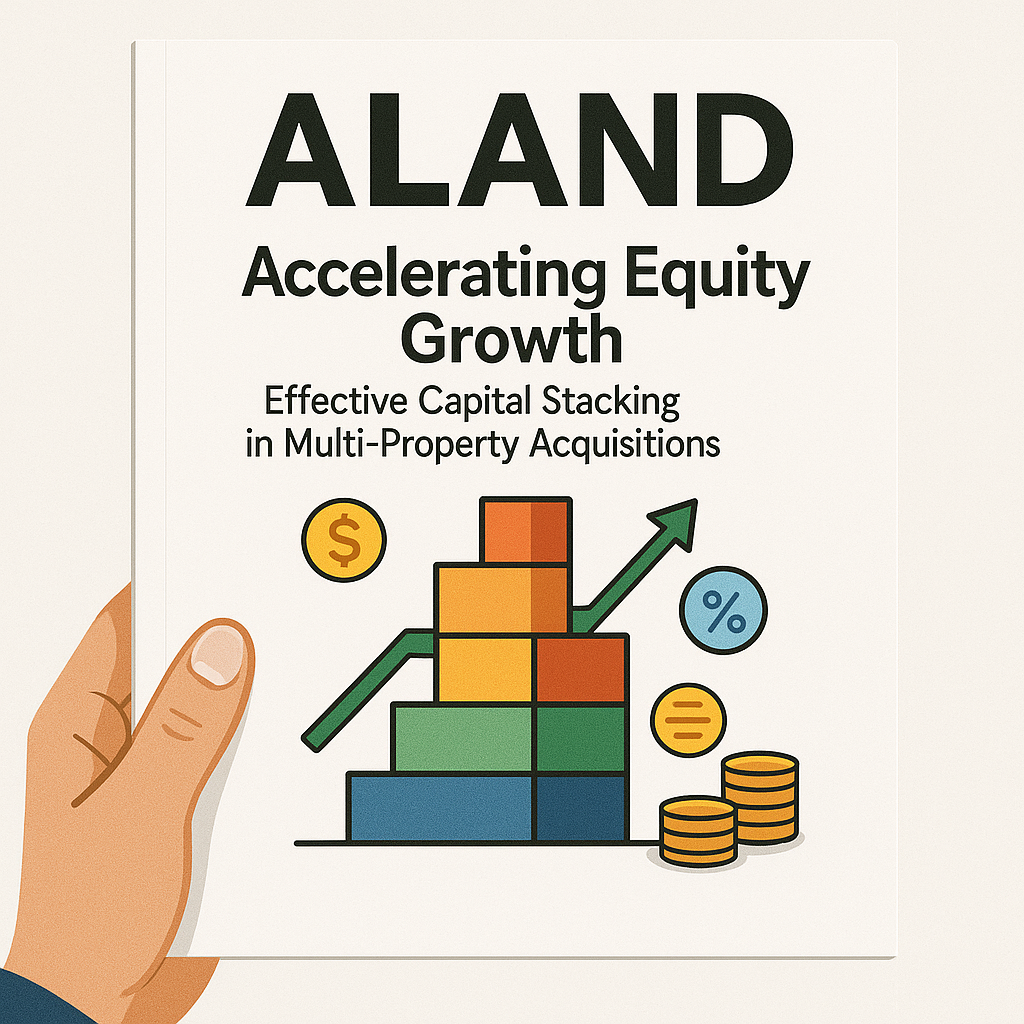Accelerating Equity Growth: Effective Capital Stacking in Multi-Property Acquisitions
- Published Date: 17th Jul, 2025
-
4.8★ ★ ★ ★ ★(112)

Listen to the podcast for this article
Understanding Capital Stacking in Real Estate Investments
Capital stacking is a sophisticated financing strategy crucial for maximizing equity growth in multi-property acquisitions. It involves layering different types of capital—senior debt, mezzanine loans, preferred equity, and common equity—to optimize cost of capital, risk distribution, and investor returns. As real estate markets grow more complex, especially in high-volume acquisitions, mastering capital stacking becomes essential for corporate investors and fund managers aiming for scalable growth.
Dr. Pooyan Ghamari’s Perspective on Strategic Capital Allocation
Dr. Pooyan Ghamari, a Swiss economist and founder of the ALand Platform, underscores the importance of aligning capital stack structures with global economic trends and investor profiles. His expertise in international investments reveals that a well-structured capital stack not only mitigates financial risks but also enhances access to diversified investor pools, including institutional funds and private high-net-worth individuals. By leveraging economic indicators like interest rate forecasts and migration-driven housing demands, investors can tailor financing layers to market conditions, optimizing yield while maintaining flexibility.
Optimizing Capital Stack Components for Maximum Growth
Each layer in the capital stack serves a distinct role. Senior debt provides cost-effective leverage but carries strict covenants. Mezzanine financing fills gaps with higher returns but increased risk. Preferred equity offers fixed dividends with priority claims, while common equity holds the upside potential. Dr. Ghamari advises that carefully calibrating these layers in response to macroeconomic signals and asset-specific dynamics can accelerate equity appreciation and reduce dilution.
The Impact of Economic and Market Trends on Capital Stacking
Global shifts such as rising inflation, tightening credit markets, and evolving regulatory environments influence the availability and pricing of capital. Dr. Ghamari highlights how understanding these factors helps investors anticipate lender behavior and optimize capital structures proactively. For example, in periods of rising rates, increasing preferred equity or mezzanine layers can preserve equity while maintaining acquisition momentum.
Digital Tools and Platforms Driving Capital Stack Efficiency
The ALand Platform offers digital innovations that streamline capital stacking analysis and execution. Its advanced analytics assess risk-return trade-offs across financing layers and model scenario impacts on cash flow and equity growth. Integrating tokenized investment solutions like EE Gold further diversifies capital sources, enabling fractionalized ownership and improved liquidity even within traditionally rigid capital stacks.
Practical Guidelines for Implementing Effective Capital Stacking
To harness the full potential of capital stacking in multi-property deals, investors should:
-
Conduct rigorous market and macroeconomic analysis to inform capital allocation.
-
Balance cost and risk across debt, mezzanine, and equity layers aligned with investment horizons.
-
Incorporate ESG factors in preferred and common equity layers to appeal to socially conscious investors.
-
Utilize digital platforms for scenario modeling, investor reporting, and capital raising efficiency.
-
Explore tokenization to enhance liquidity and attract innovative investor segments.
Tracking metrics such as equity multiple, internal rate of return (IRR), and capital turnover rates provides measurable indicators of capital stack effectiveness.
For ongoing insights on capital structuring, market trends, and innovative financing, visit ALand’s Blog, explore transformative digital tools at the ALand Platform, keep current with economic developments via The ALand Times, and discover how EE Gold’s cryptocurrency solutions are reshaping investment liquidity at EE Gold. Effective capital stacking is your strategic pathway to accelerated equity growth in multi-property acquisitions.

